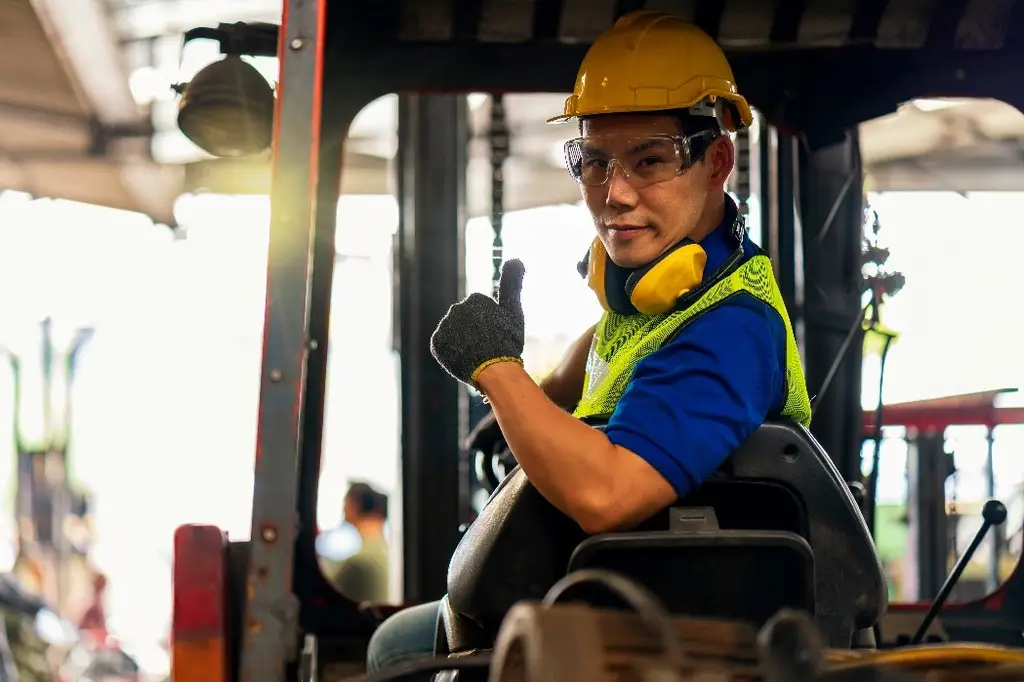Ensuring Forklift Operator Safety is crucial as this equipment is one of the most commontly used on worksite.
These automated industrial vehicle are employed to lift and transport loads with expertise and precision. Despite their durability, there are possible dangers implicated in operating any industrial machinery. According to the UK Material Handling Association, the number of forklift truck accidents is estimated at 1300 a year, which means on average there are five accidents every workday in the UK. Therefore, it is essential to ensure that staff members are well-informed about the correct safety protocols when handling forklifts.
In this article, we can first have a look at the forklift drivers’ role. We will then examine the main factors in accidental drive away and before closing with safeguard measures to reduce those accidental drive-aways at loading bays and ensure forklift operators’ safety.
Forklift Operators
Forklift operators play a crucial role in material handling and logistics operations, ensuring the efficient movement of goods and maintaining supply chain productivity. They are an integral part of the workforce in manufacturing facilities, warehouses, and distribution centers worldwide. These skilled professionals are responsible for the safe and efficient movement of goods, making them a critical piece of the overall supply chain.
Loading and unloading trailers at the loading bay is a task that forklift operators are intimately familiar with. The volume of loads they handle can vary significantly, depending on the size of the facility and the number of pickups and drop-offs scheduled each day. However, regardless of the workload, the significance of forklift safety and the potential risks associated with accidental drive-aways remain constant and relevant in all facilities.
Accidental Drive Away Risk
Loading bays are bustling hubs of activity where efficiency and productivity go hand in hand. However, the fast-paced environment can sometimes pose risks, particularly when it comes to accidental drive-aways. These incidents can lead to serious injuries, property damage, and operational disruptions.
Accidental drive-aways are a serious concern at loading bays due to several factors. First and foremost, the powerful nature of forklifts means that even a momentary lapse in attention or a slight error in judgment can lead to disastrous consequences.
Accidental drive-aways can be attributed to various factors, including:
1. Inadequate communication: Lack of proper communication between forklift operators, bay personnel, and truck drivers can result in confusion and misjudgment, leading to accidental drive-away
2. Absence or malfunction of safety mechanisms: Faulty or absent safety features, such as bay locks, wheel chocks, or interlock systems, increase the risk of unintended forklift movement
3. Human error: Forklift operators who are fatigued, distracted, or improperly trained may unintentionally engage the forklift’s controls or fail to secure the vehicle, resulting in drive-aways.
Furthermore, the busy environment at loading bays, with multiple workers, pedestrians, and equipment in close proximity, increases the likelihood of accidents. According to global statistics, forklift accidents at the loading bay are a significant concern. Each year, thousands of accidents occur, resulting in injuries, property damage, and even fatalities. Accidental drive-aways contribute to a significant portion of these incidents, highlighting the critical need for preventive measures to keep forklift operators safe.
Preventive Measures
By prioritising safety and adopting preventive measures, organisations can effectively reduce the number of accidental drive-aways at loading bays. This proactive approach involves implementing comprehensive safety protocols, providing thorough training programs, and promoting a safety culture among all employees.
When safety becomes a priority, employees are more likely to adhere to established guidelines and procedures, minimising the risk of drive-away incidents. Regular training sessions and refresher courses ensure that forklift operators are well-versed in safe operating practices specific to the loading bay environment. By equipping them with the necessary skills and knowledge, organisations empower their workforce to make informed decisions and mitigate potential risks.
The implementation of preventive measures such as clear communication protocols, physical barriers, and bay restraint systems significantly enhances safety at the loading bay. Clear communication ensures that all personnel involved in the loading and unloading processes are on the same page, reducing the likelihood of misunderstandings or miscommunication that can lead to accidents.
Physical barriers, such as guardrails and safety nets, act as a physical deterrent to safeguard forklifts against accidentally driving off the bay. Trailer restraint systems, such as the Salvo Loading Bay Safety System, provide an additional layer of security by securing the trailer in place during loading and unloading activities.
Conclusion
By fostering a secure working environment at the loading bay, organisations not only protect their employees and assets but also contribute to the global effort in minimising the toll of forklift accidents. Accidental drive-aways can result in injuries, property damage, and even loss of life. Therefore, by taking proactive steps to safeguard these incidents, organisations play a significant role in promoting workplace safety and reducing the overall impact of forklift accidents on a global scale.
